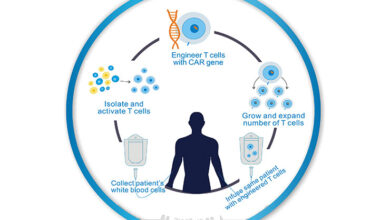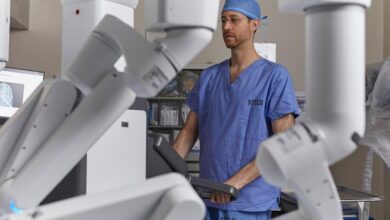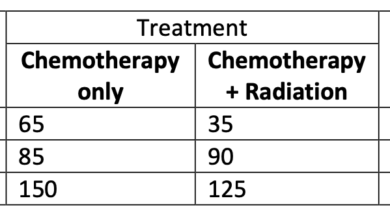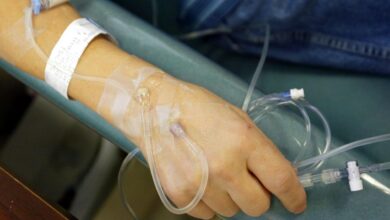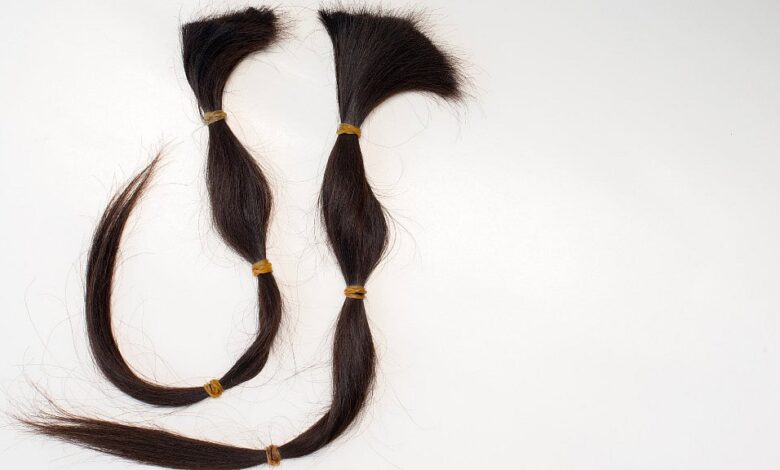
Preventing hair loss in breast cancer treatment is crucial for patients facing this challenging journey. Understanding the mechanisms behind hair loss, exploring various treatment options, and implementing lifestyle adjustments are key components in mitigating this side effect. This comprehensive guide delves into the science, strategies, and support systems available to help patients navigate this difficult time, preserving their well-being and self-image throughout their treatment.
This guide will walk you through the different types of hair loss associated with breast cancer treatment, including the timeline and impact. We’ll also explore treatment options and strategies that can potentially minimize hair loss, focusing on both conventional and alternative methods. Furthermore, we’ll examine the role of lifestyle adjustments, medications, and supplements in supporting hair health. Patient experiences, support systems, and long-term hair health management will also be addressed.
Understanding Hair Loss in Breast Cancer Treatment
Navigating breast cancer treatment can be challenging, and one of the potential side effects that many patients face is hair loss. This often leads to significant emotional distress, and understanding the mechanisms behind this can help patients cope better. This section dives deep into the science behind hair loss during treatment, outlining the different types, timelines, and impacts on patients.Hair loss during breast cancer treatment is a common, yet often distressing, side effect.
The body’s response to the aggressive therapies used in treating breast cancer can disrupt the normal hair growth cycle, leading to temporary or permanent hair loss. The specific mechanisms and types of hair loss can vary, making it crucial for patients and their support systems to be informed and prepared.
Mechanisms of Hair Loss
The hair follicle is a complex structure that cycles through phases of growth, rest, and shedding. Chemotherapy drugs, in particular, interfere with the normal cell division processes in the hair follicles, leading to the cessation of hair growth. Radiation therapy, while less directly targeted at hair follicles, can also damage the blood vessels supplying the scalp, leading to hair loss in the treated area.
Hormonal changes associated with treatment can also contribute to hair loss. A disruption in the delicate balance of hormones can affect hair growth.
Types of Hair Loss
Hair loss during breast cancer treatment can manifest in several ways. Telogen effluvium, a common type of hair loss, occurs when a large number of hair follicles enter the resting phase simultaneously. This is often triggered by significant stress, including the physical and emotional stress of a breast cancer diagnosis and treatment. Chemotherapy-induced alopecia is another common type of hair loss directly caused by chemotherapy drugs.
This typically results in diffuse hair loss over the entire scalp, and the severity can vary greatly depending on the type and dosage of chemotherapy. Radiation-induced hair loss is concentrated in the area receiving radiation therapy, often leading to localized hair loss.
Timeline of Hair Loss
The onset and duration of hair loss vary depending on the type of treatment. With chemotherapy, hair loss typically begins within a few weeks of the first treatment and may be noticeable within a few weeks or months, depending on the patient and the specific chemotherapy regimen. The hair loss can be gradual or rapid, and in many cases, the hair returns to its original state after treatment is completed.
Radiation-induced hair loss is usually more localized, and the hair loss may not be as widespread or noticeable as with chemotherapy-induced hair loss. The timeline of recovery depends on the severity of the hair loss and the individual’s response to the treatment.
Comparison of Hair Loss Types, Preventing hair loss in breast cancer treatment
| Type of Hair Loss | Cause | Impact on Patients |
|---|---|---|
| Telogen Effluvium | Significant stress, including medical procedures and treatments | Diffuse hair loss, often temporary, may vary in severity. |
| Chemotherapy-induced alopecia | Interference with hair follicle cell division by chemotherapy drugs | Diffuse hair loss over the entire scalp, often temporary, but may be permanent in some cases. |
| Radiation-induced hair loss | Damage to blood vessels supplying the scalp due to radiation therapy | Localized hair loss in the treated area, often temporary, but can be permanent in extreme cases. |
Treatment Options and Strategies
Navigating breast cancer treatment can be overwhelming, especially when considering potential side effects. Understanding the various treatment options and their impact on hair health is crucial for making informed decisions. This section delves into the relationship between specific treatments and hair loss, outlining potential strategies to mitigate this side effect.Breast cancer treatment encompasses a range of approaches, each with its own set of potential benefits and risks.
Chemotherapy, hormonal therapy, targeted therapy, and surgery are common treatment modalities, and some, unfortunately, are associated with hair loss. The severity and duration of hair loss can vary greatly depending on the individual, the specific treatment regimen, and the type of cancer.
Chemotherapy Treatments and Hair Loss
Chemotherapy drugs work by targeting rapidly dividing cells, including those in hair follicles. This targeted approach can result in temporary hair loss, often described as a “chemo-induced” hair loss. The extent of hair loss varies significantly between individuals and among different chemotherapy drugs.
Comparison of Chemotherapy Drugs and Hair Loss Potential
The effectiveness of chemotherapy in combating cancer cells is directly linked to its ability to damage these rapidly dividing cells. However, this damage can also impact healthy cells, like those in hair follicles. Some chemotherapy drugs are more potent in killing cancer cells but may also cause more noticeable hair loss.
| Chemotherapy Drug | Hair Loss Potential | Efficacy |
|---|---|---|
| Cyclophosphamide | High | Effective against various cancers |
| Docetaxel | Moderate to High | Effective against certain cancers, often used in combination |
| Paclitaxel | Moderate to High | Effective against certain cancers, often used in combination |
| Methotrexate | Low to Moderate | Effective in treating various cancers, often used in combination |
Note: This table provides a general overview. The specific hair loss experience for each individual can vary greatly. Consult with your oncologist for personalized information.
Preventive Strategies to Mitigate Hair Loss
Addressing hair loss proactively can significantly improve the patient experience during breast cancer treatment. A multi-pronged approach encompassing lifestyle modifications, topical treatments, and communication with healthcare professionals is often necessary.
- Healthy Diet: Maintaining a balanced diet rich in vitamins, minerals, and protein supports overall health, potentially influencing hair growth and minimizing hair loss. Examples of crucial nutrients include protein, iron, and vitamins B12 and D. Proper nutrition is often overlooked but plays a key role in maintaining overall health during cancer treatment.
- Stress Management: Stress can negatively impact hair health. Employing stress-reducing techniques like meditation, yoga, or spending time in nature can help to mitigate potential hair loss during treatment.
- Gentle Hair Care: Avoid harsh chemicals and treatments. Opt for gentle hair care products and techniques to protect hair follicles from further damage.
- Consult Your Doctor: Discuss with your oncologist about potential preventive measures and any concerns about hair loss. Some medications or lifestyle adjustments might be beneficial, and your doctor can provide tailored recommendations.
Lifestyle Adjustments and Support
Navigating breast cancer treatment can be challenging, impacting not just physical health but also emotional well-being. Beyond medical interventions, proactive lifestyle adjustments can significantly support hair health and overall well-being during and after treatment. These adjustments encompass dietary choices, stress management strategies, and the role of exercise. Understanding and implementing these practices can empower patients to actively participate in their recovery and maintain a positive outlook.Embracing healthy habits during and after treatment can foster a sense of control and resilience.
Dealing with hair loss during breast cancer treatment can be tough, but thankfully, there are ways to manage it. Learning about different strategies, like using special shampoos and finding the right support system, can make a huge difference. It’s also important to remember that navigating the emotional aspects of cancer treatment is just as crucial as the physical side.
This is especially true when considering how a breast cancer survivor might also feel about the covid vaccine, as discussed in more detail in this article on breast cancer survivor and covid vaccine. Ultimately, staying informed and empowered through resources like these can help you feel more prepared and resilient throughout the entire process, ensuring you’re tackling hair loss head-on.
By prioritizing nutrition, managing stress, and incorporating regular exercise, patients can bolster their body’s natural defenses and support healthy hair growth. This proactive approach can help maintain a positive body image and overall quality of life.
Dietary Changes for Hair Health
A balanced diet rich in essential nutrients is crucial for supporting hair health. Nutrients like protein, iron, zinc, and vitamins A, C, and D play vital roles in hair follicle health and growth. Prioritizing nutrient-rich foods like lean proteins, leafy greens, fruits, and whole grains is essential. For example, incorporating salmon, a source of omega-3 fatty acids, can contribute to overall hair health.
Consuming a variety of foods ensures a comprehensive intake of these essential nutrients. Avoidance of processed foods and excessive sugar intake can also contribute to better hair health.
Stress Management Techniques
Chronic stress can negatively impact hair growth and overall health. Stress hormones can disrupt the hair growth cycle, potentially leading to hair loss. Implementing stress management techniques is crucial. Practices such as meditation, deep breathing exercises, yoga, and spending time in nature can effectively reduce stress levels. Seeking support from friends, family, or support groups can also provide emotional comfort and a sense of community during a challenging time.
Consistent engagement in stress-reducing activities can foster a calmer and more resilient state of mind.
Exercise and Physical Activity
Maintaining a regular exercise routine can contribute to overall health and well-being during treatment. Physical activity helps in boosting the immune system, reducing stress, and improving mood. Even moderate-intensity exercises like brisk walking, swimming, or cycling can be beneficial. Regular physical activity can promote blood circulation, providing essential nutrients to hair follicles and aiding in overall hair health.
Furthermore, exercise promotes relaxation and reduces stress levels, contributing to a more positive experience during treatment.
Lifestyle Adjustments for Hair Health
| Lifestyle Adjustment | Potential Benefits | Integration into Daily Routines |
|---|---|---|
| Balanced Diet | Provides essential nutrients for hair growth, reduces inflammation, and supports overall health. | Plan meals around protein-rich foods, fruits, vegetables, and whole grains. Include healthy fats like avocados and nuts. Limit processed foods and sugary drinks. |
| Stress Management | Reduces stress hormones that can negatively impact hair growth and overall well-being. | Incorporate relaxation techniques like meditation, deep breathing, yoga, or spending time in nature. Seek support from friends, family, or support groups. |
| Regular Exercise | Boosts the immune system, reduces stress, improves mood, and promotes blood circulation to hair follicles. | Aim for at least 30 minutes of moderate-intensity exercise most days of the week. Consider activities like walking, swimming, cycling, or strength training. |
Medications and Supplements
Navigating the world of hair loss during breast cancer treatment can feel overwhelming. While there’s no magic bullet, understanding the potential role of medications and supplements can empower you to explore options and potentially find relief. This section delves into the specifics of these approaches, providing insights into their mechanisms and potential impact on hair health.Specific medications, often prescribed for other conditions, can sometimes influence hair growth.
These medications may offer a valuable avenue for mitigating hair loss, but it’s crucial to consult with your oncologist to understand the potential benefits and risks, especially in conjunction with your breast cancer treatment. Additionally, supplements may play a supportive role in promoting hair health, but they should not be used as a substitute for medical advice.
Finding ways to prevent hair loss during breast cancer treatment is a real concern for many. The side effects of chemotherapy can be tough, but thankfully, there are options. This issue, alongside the growing secondary drug industry, is prompting innovation in various fields. For example, the secondary drug industry booming amid opioid epidemic highlights a parallel need for effective and safe solutions.
Ultimately, more research and support are needed to help women cope with these challenges and maintain their health and well-being throughout treatment.
Hair Growth Stimulating Medications
Medications known for their potential to stimulate hair growth, such as finasteride and minoxidil, are sometimes considered for individuals experiencing hair loss. Understanding their mechanisms of action can help determine potential effectiveness.
- Finasteride, primarily used to treat male pattern baldness, works by inhibiting the conversion of testosterone to dihydrotestosterone (DHT). DHT is a hormone linked to hair follicle shrinkage. This mechanism of action might potentially reduce hair loss in some individuals. However, its efficacy and safety in preventing hair loss related to chemotherapy or other breast cancer treatments need further research.
It’s vital to discuss this option with your oncologist before considering it.
- Minoxidil, a topical medication, stimulates hair follicles by increasing blood flow to the scalp. This improved blood circulation can provide nutrients to the hair follicles, potentially promoting hair growth. Its effectiveness in mitigating hair loss associated with breast cancer treatment is variable and may require a longer treatment period for noticeable results. Similar to finasteride, careful consultation with your oncologist is paramount before using this medication.
Commonly Used Supplements
Various supplements are often touted for their potential benefits to hair health. It’s essential to remember that supplements are not regulated in the same way as medications, and their effectiveness isn’t always scientifically proven.
- Biotin is a B vitamin known for its role in hair growth. While some anecdotal evidence suggests its benefits, conclusive scientific research supporting its effectiveness in preventing hair loss related to breast cancer treatment is limited. Always consult with your healthcare provider before starting any new supplement regimen.
- Iron, zinc, and vitamin D are essential nutrients for healthy hair growth. A deficiency in any of these nutrients can negatively impact hair health. A blood test can determine your nutrient levels. If deficiencies are found, your doctor can recommend appropriate dietary adjustments or supplements under their guidance.
- Omega-3 fatty acids, found in fish oil supplements, are important for overall health and may contribute to hair health. Their role in mitigating hair loss related to breast cancer treatment is not definitively established. Consider them as part of a healthy diet, but don’t rely on them as a sole solution for hair loss.
Designing a Customized Supplement Plan
Creating a personalized supplement plan for managing hair loss requires careful consideration of individual needs and consultation with a healthcare professional.
- Thorough Consultation: Discuss your current health status, including any existing medical conditions, medications, and dietary restrictions, with your oncologist and a registered dietitian. They can assess your specific needs and potential interactions between supplements and other treatments.
- Nutrient Testing: Getting blood tests to assess nutrient levels, such as iron, zinc, and vitamin D, is crucial. This helps determine if a deficiency is present and guides the selection of appropriate supplements.
- Gradual Introduction: Start with a small dose of any new supplement and gradually increase it as tolerated. Monitor for any adverse reactions or interactions with other medications.
- Diet Adjustments: A balanced diet rich in essential nutrients is critical for overall health, including hair health. This should be a key component of any plan, alongside supplements.
Alternative and Complementary Approaches
Navigating breast cancer treatment can be emotionally and physically challenging. Beyond conventional medical approaches, many explore alternative and complementary therapies to manage side effects like hair loss. These therapies often focus on supporting the body’s natural healing processes and promoting overall well-being. However, it’s crucial to remember that these methods are not substitutes for standard medical care. Always discuss any alternative therapy with your oncologist to ensure safety and avoid potential conflicts with your treatment plan.Alternative therapies for hair loss during breast cancer treatment often involve topical applications, scalp massages, and dietary adjustments.
While these approaches may provide comfort and support, their effectiveness in preventing or reversing hair loss is not always supported by robust scientific evidence. It’s important to approach these methods with realistic expectations and a thorough understanding of their potential benefits and risks.
Topical Treatments
Topical treatments for hair loss often involve applying various oils, creams, or serums directly to the scalp. These products are sometimes promoted for their purported ability to stimulate hair growth and strengthen follicles. Examples include stimulating serums with ingredients like minoxidil or ketoconazole. However, the effectiveness of these topical treatments in preventing or reversing hair loss during breast cancer treatment is often limited and not universally supported by scientific evidence.
Results can vary significantly between individuals.
Scalp Massages
Regular scalp massages can improve blood circulation to the scalp, potentially promoting hair growth. This is a non-invasive approach that can be incorporated into a self-care routine. However, the evidence supporting scalp massage as a primary treatment for hair loss during breast cancer is limited. The effect on hair growth may be minimal, and it is not a replacement for medical interventions.
Scalp massages are typically considered a complementary therapy rather than a primary treatment option.
Dietary Adjustments
Some individuals believe that specific dietary changes can positively impact hair growth. While a healthy diet is essential for overall well-being, there’s no definitive evidence linking specific dietary supplements or food groups to significant hair regrowth during chemotherapy-related hair loss. A balanced diet rich in nutrients like protein, vitamins, and minerals is crucial for maintaining general health, but it’s not a guaranteed method for preventing hair loss.
Comparison with Conventional Treatments
Conventional medical treatments for hair loss prevention, such as medications and specific scalp care techniques, are often supported by robust clinical trials and scientific evidence. These treatments are often part of a comprehensive cancer treatment plan. Alternative therapies, in contrast, typically lack the same level of rigorous scientific support. When considering any approach, it’s essential to discuss the potential benefits and risks with a healthcare professional to make an informed decision that aligns with your overall treatment plan.
While some individuals find comfort and support in alternative therapies, they should not replace or contradict the advice of medical professionals.
Patient Experiences and Support Systems
Navigating breast cancer treatment can be emotionally challenging, and hair loss is a common side effect that often impacts patients’ self-image and overall well-being. Understanding the diverse experiences of those affected and the support systems available can significantly aid in managing this difficult period. This section delves into patient experiences, available resources, and the crucial role of support in overcoming hair loss during treatment.Patient experiences with hair loss during breast cancer treatment vary greatly.
Dealing with hair loss during breast cancer treatment can be tough, but one often-overlooked factor is sleep. Making a small change like trying to sleep one hour earlier each night could significantly impact your overall health and, in turn, potentially reduce the severity of hair loss. Prioritizing better sleep hygiene can indirectly contribute to a stronger body’s ability to fight the treatment’s effects and help prevent hair loss.
Some patients report a gradual thinning of hair, while others experience a more abrupt and noticeable loss. The extent of hair loss can also differ, ranging from minor shedding to complete alopecia. These experiences are often accompanied by feelings of distress, anxiety, and low self-esteem. The impact on body image can be profound, leading to emotional distress and a desire for coping strategies.
Patient Experiences with Hair Loss
Patients often describe hair loss as a distressing aspect of treatment. The experience can be highly emotional, triggering feelings of vulnerability, anxiety, and sometimes, even depression. These feelings are frequently compounded by the physical changes associated with hair loss, impacting self-image and body perception. It’s important to acknowledge that each patient’s experience is unique, and there’s no one-size-fits-all response.
Support Systems and Resources
Navigating hair loss during cancer treatment is significantly easier with a robust support system. Family, friends, and supportive healthcare professionals play a crucial role in providing emotional comfort and practical assistance. Many resources are available to help patients cope with the physical and emotional impact of hair loss. These resources can range from simple acts of kindness to structured support groups and professional counseling.
Support Groups and Online Communities
Support groups, both in-person and online, offer a crucial platform for patients to connect with others facing similar experiences. These communities provide a safe space to share feelings, coping strategies, and advice. Online forums and social media groups dedicated to breast cancer survivors offer valuable connections with individuals who understand the challenges of hair loss. These communities often provide a sense of belonging and solidarity, helping to alleviate feelings of isolation.
Counseling Services
Professional counseling can be a vital resource for patients experiencing distress related to hair loss. A therapist can provide a safe space to process emotions, develop coping mechanisms, and improve self-esteem. Counseling can help patients adjust to the changes in their appearance and manage associated anxieties. It’s important to remember that seeking professional help is a sign of strength, not weakness.
Online Resources, Support Groups, and Professional Organizations
| Category | Resource |
|---|---|
| Online Support Groups | Look for groups on Facebook, Reddit, or specialized cancer support websites. |
| Professional Organizations | American Cancer Society, National Breast Cancer Foundation |
| Online Resources | Websites offering information on hair loss during treatment, including articles, tips, and coping strategies. |
Long-Term Hair Health After Treatment

The journey of breast cancer treatment can significantly impact hair health, and the effects can extend beyond the immediate post-treatment period. Understanding how to maintain long-term hair health is crucial for patients’ overall well-being and confidence. This involves more than just regaining lost hair; it’s about fostering healthy, resilient hair follicles for the future.Long-term hair health after breast cancer treatment involves careful management of hair care routines, proactive communication with healthcare providers, and a commitment to a healthy lifestyle.
This period demands a focus on gentle handling and a holistic approach to hair and scalp health, recognizing that individual responses to treatment can vary.
Strategies for Maintaining Long-Term Hair Health
Maintaining healthy hair post-treatment involves a multi-faceted approach. Consistent and gentle hair care practices are key.
- Gentle Hair Handling: Avoid harsh brushing, tight hairstyles, and excessive heat styling. Use wide-tooth combs to detangle wet hair and avoid tugging or pulling. Be mindful of the scalp’s sensitivity during this phase. Choose soft, natural fibers for hair accessories and consider wearing hair ties made of soft materials like silk or satin.
- Balanced Diet: A balanced diet rich in vitamins, minerals, and protein supports healthy hair growth. Include foods rich in iron, zinc, biotin, and protein in your daily meals. Consult with a nutritionist to tailor a diet that meets your specific needs and preferences. A balanced diet not only supports hair growth but also overall well-being during recovery.
- Scalp Care: Gentle scalp massages can stimulate blood flow to the hair follicles. Use a mild, sulfate-free shampoo and conditioner to avoid stripping the scalp’s natural oils. Avoid harsh chemical treatments and excessive heat styling.
Potential for Hair Regrowth and Timing
Hair regrowth after breast cancer treatment is a variable process. Some patients experience regrowth within months, while others may experience a longer time frame. The timing and extent of regrowth depend on individual factors such as the type of treatment, dosage, overall health, and genetics. In some cases, the hair that regrows may have a different texture or color than before treatment.
- Individual Variation: It’s crucial to remember that there is no fixed timeframe for hair regrowth. Each patient’s experience is unique and depends on their individual circumstances.
- Factors Affecting Regrowth: The type of treatment, its intensity, and the patient’s overall health all contribute to the speed and completeness of hair regrowth. Some patients might see hair regrowth within a few months, while others may take significantly longer. It’s important to be patient and supportive of the body’s healing process.
- Potential for Permanent Changes: In some cases, hair loss may be permanent, particularly with more intensive chemotherapy regimens. Acceptance and realistic expectations are crucial during this time.
Importance of Regular Follow-up Appointments
Regular follow-up appointments with healthcare providers are essential for monitoring hair health and overall well-being after treatment. These appointments provide opportunities to discuss any concerns, address potential issues, and adjust treatment plans as needed.
- Monitoring Progress: Regular check-ups allow healthcare providers to track the patient’s progress, noting any changes in hair regrowth, scalp condition, or other related concerns. Open communication facilitates appropriate interventions.
- Addressing Concerns: If a patient experiences persistent hair loss or scalp issues, prompt communication with the healthcare team is crucial. Addressing concerns proactively can help manage potential complications.
- Adjusting Treatment Plans: In some cases, adjustments to the patient’s overall care plan may be necessary to address specific issues related to hair health. Healthcare professionals are well-equipped to guide patients through these adjustments.
Illustrative Examples of Prevention Strategies
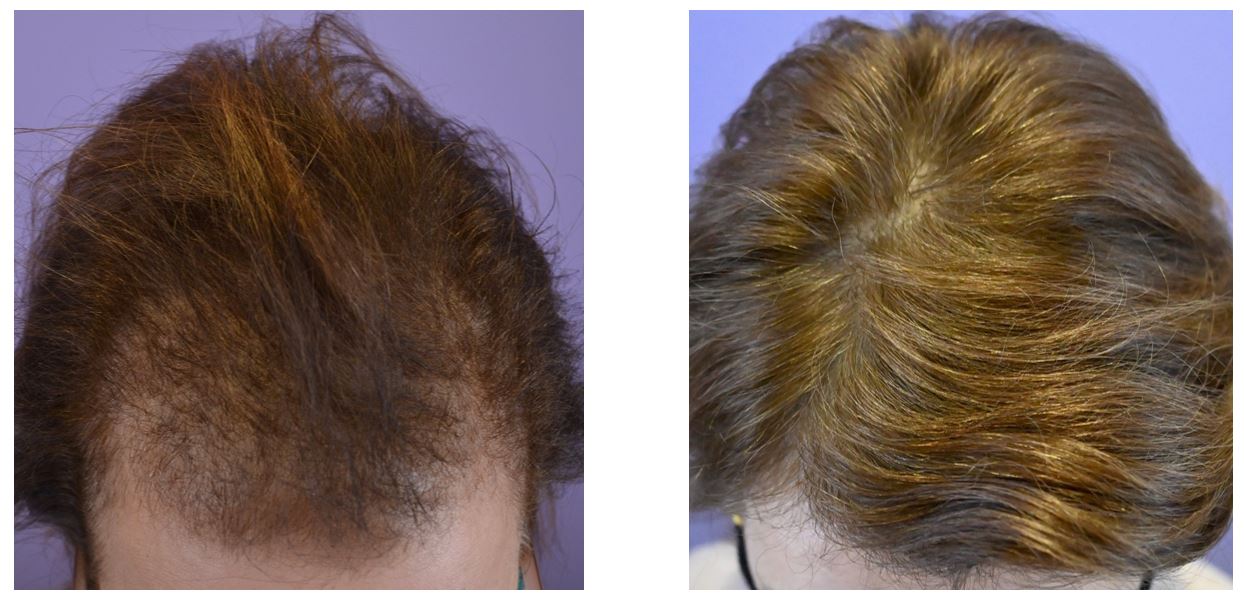
Navigating breast cancer treatment often means facing potential hair loss. While not always preventable, proactive strategies can significantly impact the experience. Understanding the different approaches and their potential effectiveness is key to making informed decisions.These illustrative examples highlight various prevention strategies, from targeted therapies to holistic approaches, offering insights into how patients can manage this side effect. By understanding the rationale behind each strategy and the potential results, individuals can work with their healthcare team to find the best solutions for their unique needs.
Specific Prevention Strategy: Topical Minoxidil
Topical minoxidil, a medication commonly used for hair growth, is a viable strategy. The rationale behind its use lies in its ability to increase blood flow to the scalp. Increased blood flow potentially promotes hair follicle health and may help prevent hair loss. Studies show mixed results, but some individuals report positive outcomes. The expected results, while not guaranteed, can range from slowing hair loss to stimulating new hair growth.
It’s crucial to note that minoxidil’s effectiveness varies among individuals, and results may take several weeks or months to become noticeable. Consistency and patience are vital.
Another Prevention Method: Scalp Massage Techniques
Scalp massage, though not a medically proven hair-growth treatment, can be incorporated into a comprehensive hair loss prevention strategy. The process involves gentle, circular motions applied to the scalp. The purported benefits are increased blood circulation to the hair follicles, stimulating growth and potentially reducing hair shedding. While there’s limited scientific evidence to definitively prove its effectiveness in preventing hair loss, many individuals find it relaxing and potentially helpful in reducing stress, which can indirectly influence hair health.
Holistic Approach to Managing Hair Loss
A holistic approach emphasizes addressing the issue from various angles, encompassing physical, mental, and emotional well-being. This approach often involves a combination of strategies rather than relying solely on one method. Key components of a holistic approach include a balanced diet rich in essential nutrients, stress-reduction techniques like yoga or meditation, and ensuring adequate hydration. These practices, combined with topical treatments, can create a more comprehensive and supportive environment for hair growth.
Examples of stress-reduction techniques include deep breathing exercises, spending time in nature, or engaging in activities that promote relaxation and joy.
Prevention Strategies: A Comparative Overview
| Prevention Strategy | Cost | Efficacy | Potential Side Effects |
|---|---|---|---|
| Topical Minoxidil | Moderate (prescription, but may vary based on brand and quantity) | Mixed, may vary by individual | Possible skin irritation, scalp dryness, or hair growth in unwanted areas. |
| Scalp Massage | Low (no specific product needed) | Limited scientific evidence, but potentially helpful for stress reduction. | No significant side effects, but may not be effective for all individuals. |
| Balanced Diet | Low (cost of healthy foods) | Essential for overall health, potentially supporting hair health. | None directly related to hair loss prevention, but nutritional deficiencies can lead to various health issues. |
| Stress Reduction Techniques | Low to Moderate (depending on chosen technique) | Potentially significant for reducing stress-related hair loss. | No direct side effects, but effectiveness depends on individual response. |
Closing Summary: Preventing Hair Loss In Breast Cancer Treatment
In conclusion, preventing hair loss during breast cancer treatment is a multifaceted approach encompassing a deep understanding of the treatment process, proactive lifestyle adjustments, and access to supportive resources. By exploring various options and empowering patients with knowledge and support, we can work towards minimizing the impact of hair loss and fostering a sense of well-being during this challenging time.
The journey through breast cancer treatment is not easy, but with the right information and support, patients can navigate it with more confidence and grace.

